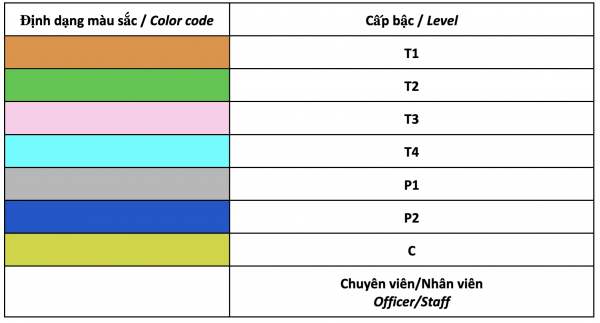Hoạch định nguồn nhân lực/ Talent resources planning
POSITION CATALOGUE
Purpose of the Positions Catalogue: to address the positions required in the system and their levels, thus forming a basis for headcount plans, organizational chart and job descriptions. The Positions catalogue helps employees to fully understand their positions as well as career development paths to strive to higher levels.
|
|
HEADCOUNT
Headcount refers to the act of identifying the workloads and time needed to complete certain tasks, based on the Company’s business plans and development strategies, thereby coming up with the required number of employees. Headcount plays a crucial role in human resources strategies, which must be built on the Company strategies. Headcount provides the Company with a clear picture on how to operate more effectively and recruitment and training grounds to meet its demands on human resources.
|
|
ORGANIZATIONAL CHART
Organizational chart represents the structure of an organization and the relationships between and levels of its positions/departments. Looking at the Organizational chart, employees can tell what role they play in the system, who their manager is, and who they need to report to. In addition, employees can understand the functions and missions of each department and person in charge of each section of any department and the Company, thus enabling effective cooperation. Through the organization chart, evaluation of consistency between actual internal resources and the Company’s planned goals and strategies can be made. Hence, managers of the Company shall be able to see the roles, impacts, and contributions of all departments and their suitability for the Company’s strategy.
|
| JOB DESCRIPTION Job description forms a basis for employees to fully understand the goals, functions, missions, job requirements, rights, and responsibilities of their positions. The Job Description is not only a work commitment between the employees and managers, but also the basis to guide employees to work properly, contributing to the plan fulfillment of the teams/departments in particular and the Company in general.
|

